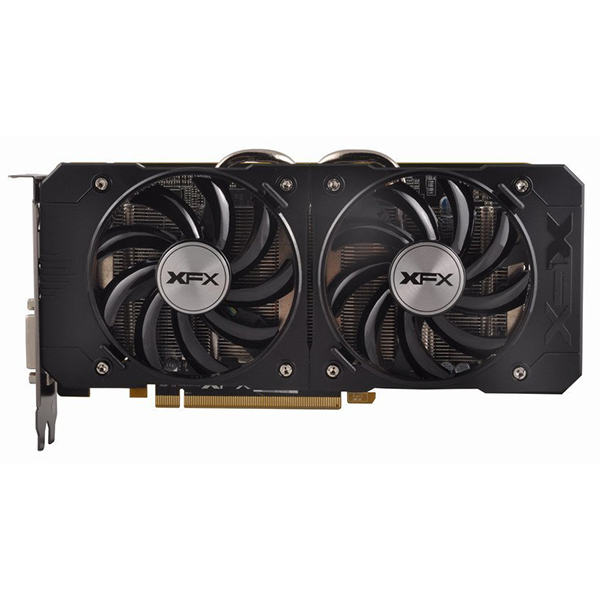Early Verdict
XFX’s R7 370 lands between the GTX 750 Ti and GTX 950 in performance, but the price point is too high. It would have been a tremendous competitor for Nvidia’s previous card in this price range, but now that the GTX 950 has launched, the R7 370 isn’t quite up to par.
Pros
- +
Low GPU Temperature, high overclock
Cons
- -
Loud, too expensive compared to competition
Why you can trust Tom's Hardware
Specifications & Product 360
High-end graphics cards receive the most attention, but not everyone can afford to spend big bucks on one. Besides, most gamers don’t need that kind of power. Rather, AMD thinks its Radeon R7 370 is the right fit for a large swath of its customers. Our Best Graphics Cards For The Money column would agree. The 370 is one of our picks around the $150 level, after all.
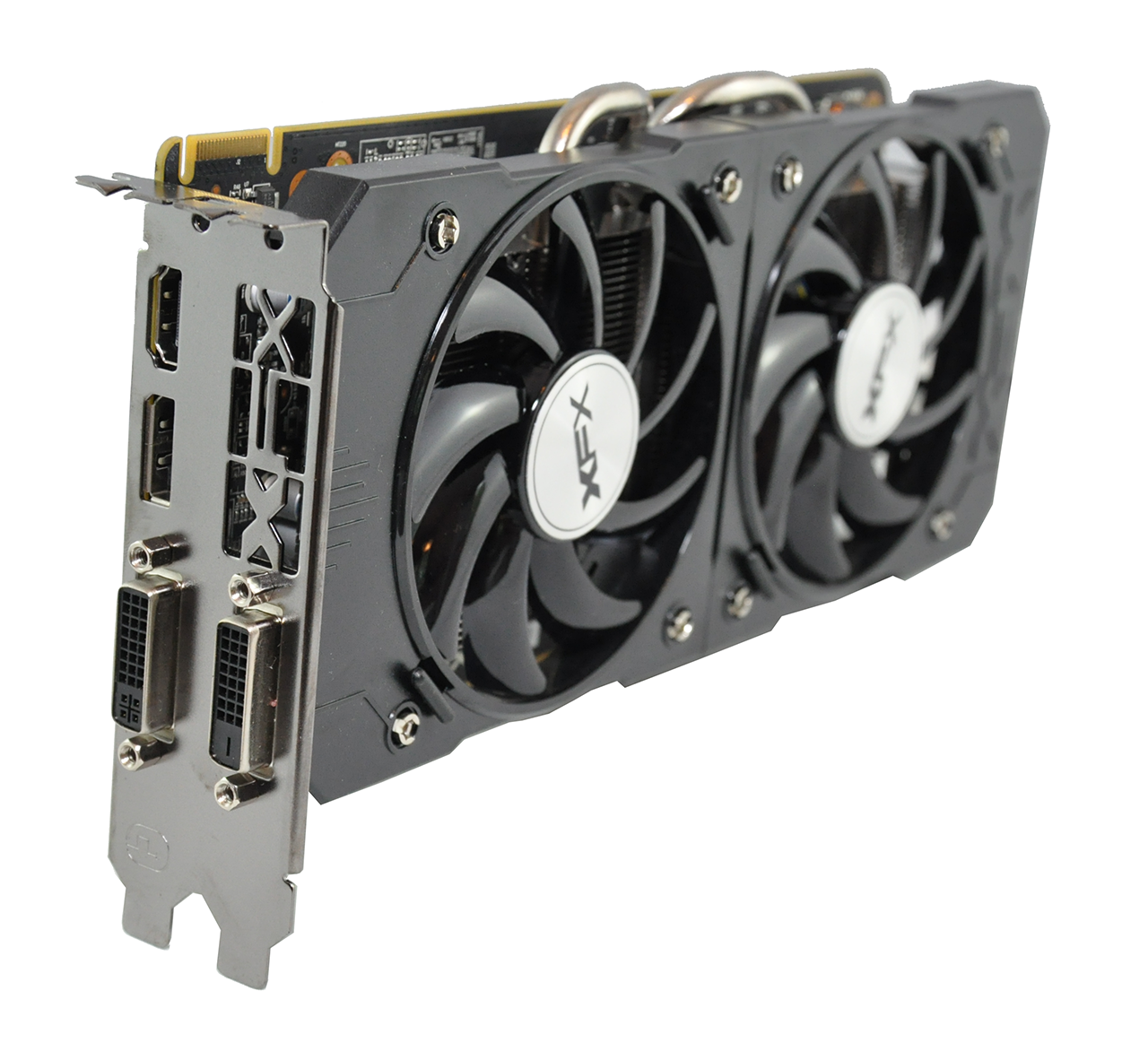
XFX’s R7 370 2GB Black Edition is built on AMD's Trinidad GPU. It's an affordable graphics card designed to deliver enough performance for 1920x1080 at a price point low enough that almost anyone can justify. The R7 370 features 1024 shaders, 64 texture units and 32 ROPs. It operates at a base clock rate of 975MHz, and includes either 2GB or 4GB of GDDR5 memory on an aggregate 256-bit bus. The overclocked implementation we're reviewing today comes with 2GB of GDDR5 at 5.8 GT/s and a GPU tuned to 1040MHz GPU.
Specifications
MORE: Best Graphics Cards For The MoneyMORE: All Graphics Articles
MORE: Graphics Cards in the Forum
Product 360
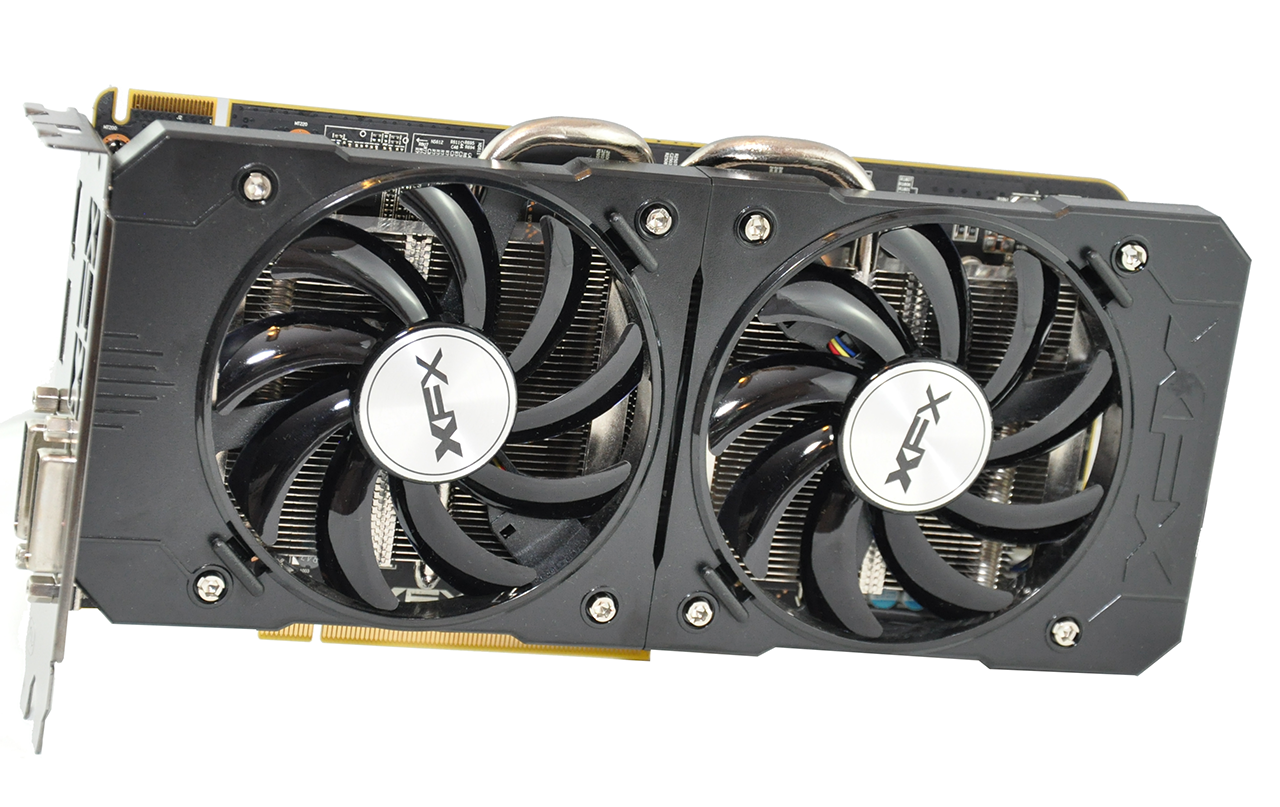
One of the first things you'll notice about the XFX Radeon R7 370 Black Edition 2GB is how devoid of garish bling it is. The shroud is a basic black plastic with a matte finish, and the fans are a slightly glossier finish with reflective XFX logo stickers covering the centers. There is no other color to be found, and the shroud isn’t stylized in a particularly fancy way. XFX even builds the card on a black PCB to keep the aesthetic consistent.

XFX brands its cooling solution Double Dissipation, arming it with two 90mm IP5X fans that push air down through the heat sink. The company uses what it calls Ghost Thermal 3.0 technology, featuring a floating, open-air design. Except where it contacts the GPU, the heat sink is raised above the components on the card. XFX says this offers superior cooling by allowing air to pass freely through the horizontal aluminum fins, though it also leaves the memory modules and VRMs with no direct contact, relying on air passing directly over them for cooling. The GPU, of course, does make contact with the sink, and two 7mm electro-plated copper heat pipes in the shape of a U pass through the fins to improve thermal transfer.
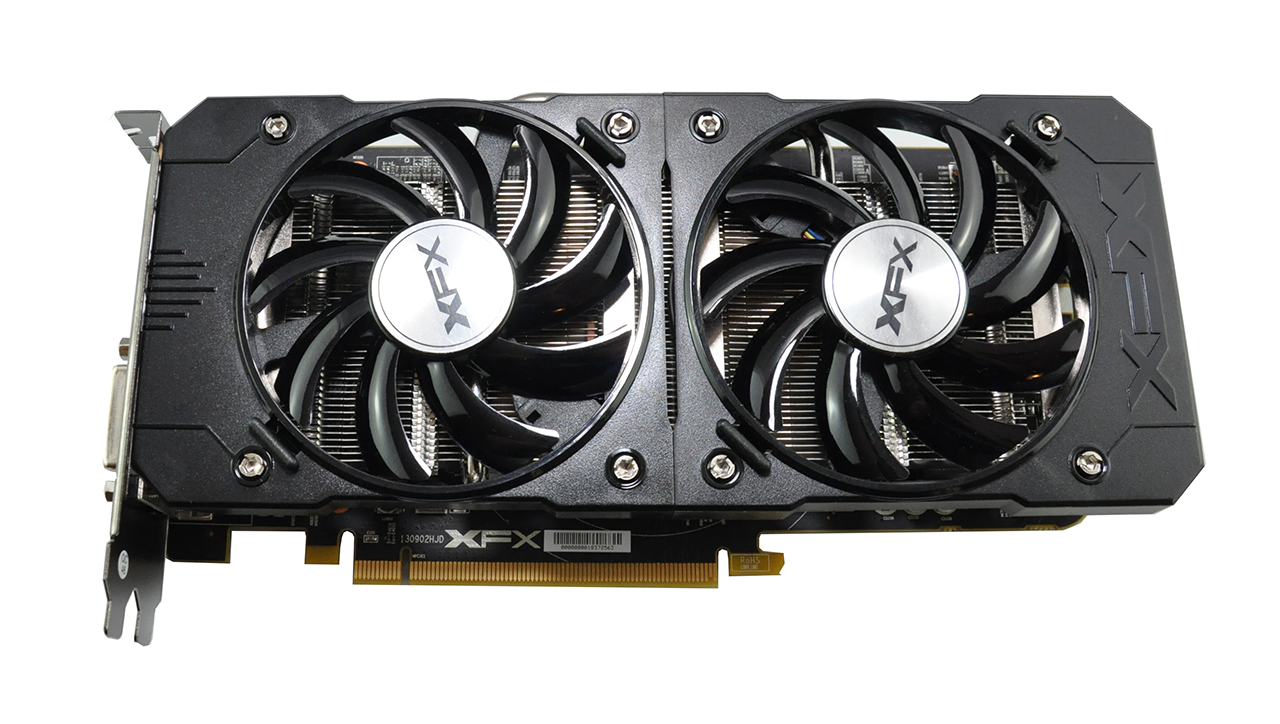
See the plastic tabs in the lower-left and upper-right corners of each 90mm fan? These release the fans from the shroud and allow for easier cleaning, though the wires connecting them to the power source are very short. The fans are only able to be lifted enough to clean out dust.

Measuring from the tip of the I/O bracket to the end of the black plastic shroud, the card is 9.75 inches long. The black PCB is 4 and 3/8 inches tall, but the two heat pipes protrude out the top and add an additional quarter-inch. The dual-slot cooling solution is slightly narrower than some of the other cards I’ve tested recently. XFX's board doesn’t feel very heavy. Still, at 508g, you wouldn't call it light, either.

The Radeon R7 370 Black Edition requires one six-pin power connector, which sticks out the back of the card rather than out its top. It's oriented so that the locking tab faces out, making it easier to remove. As you can see in the picture, XFX reuses this PCB design; there's space for a second power connector that goes unused.
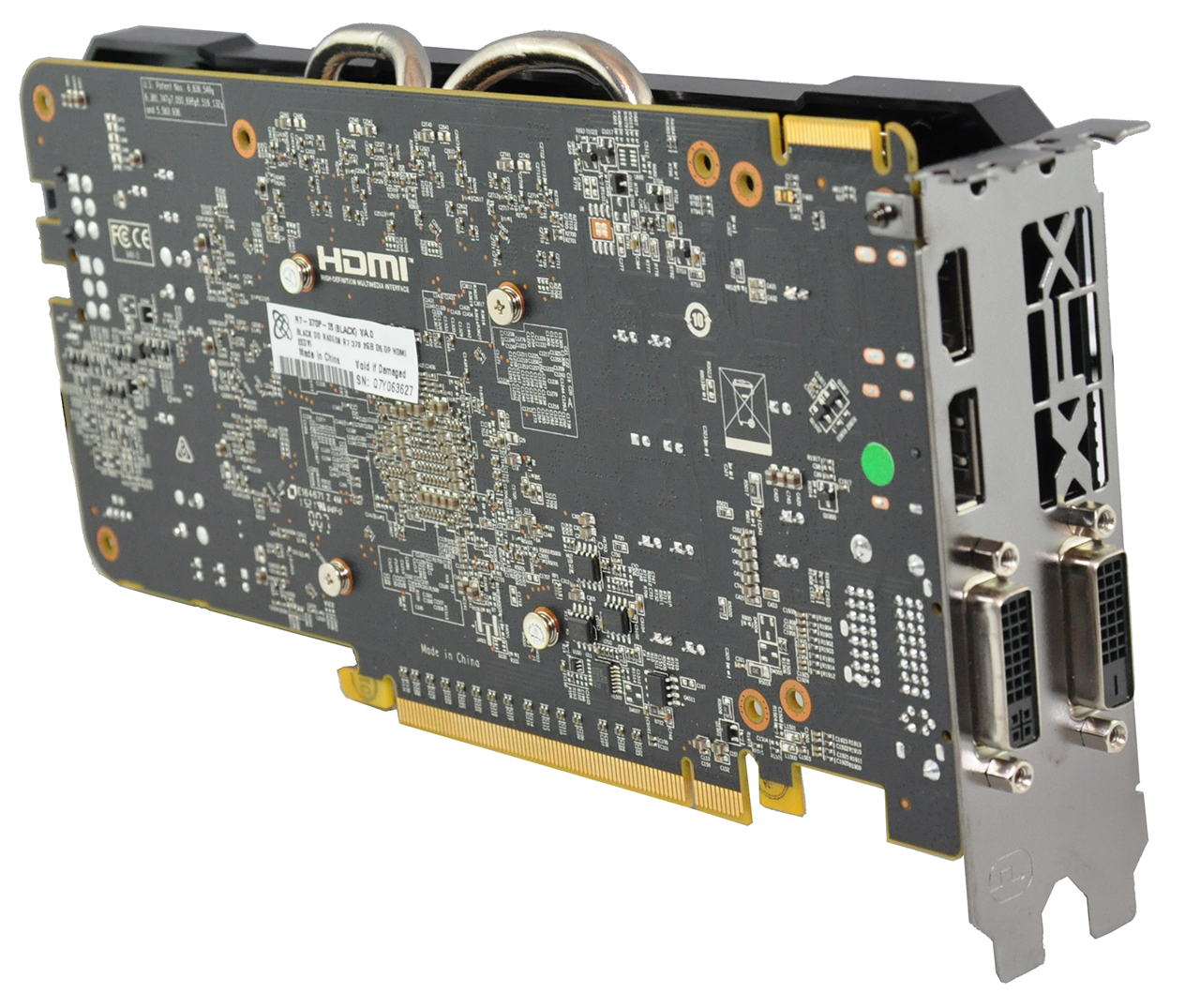
AMD’s newer GPUs do away with physical CrossFire links, but the R7 370's pedigree dates back to Pitcairn, which predates the XDMA engine. As such, a single CrossFire connector enables dual-card configurations.
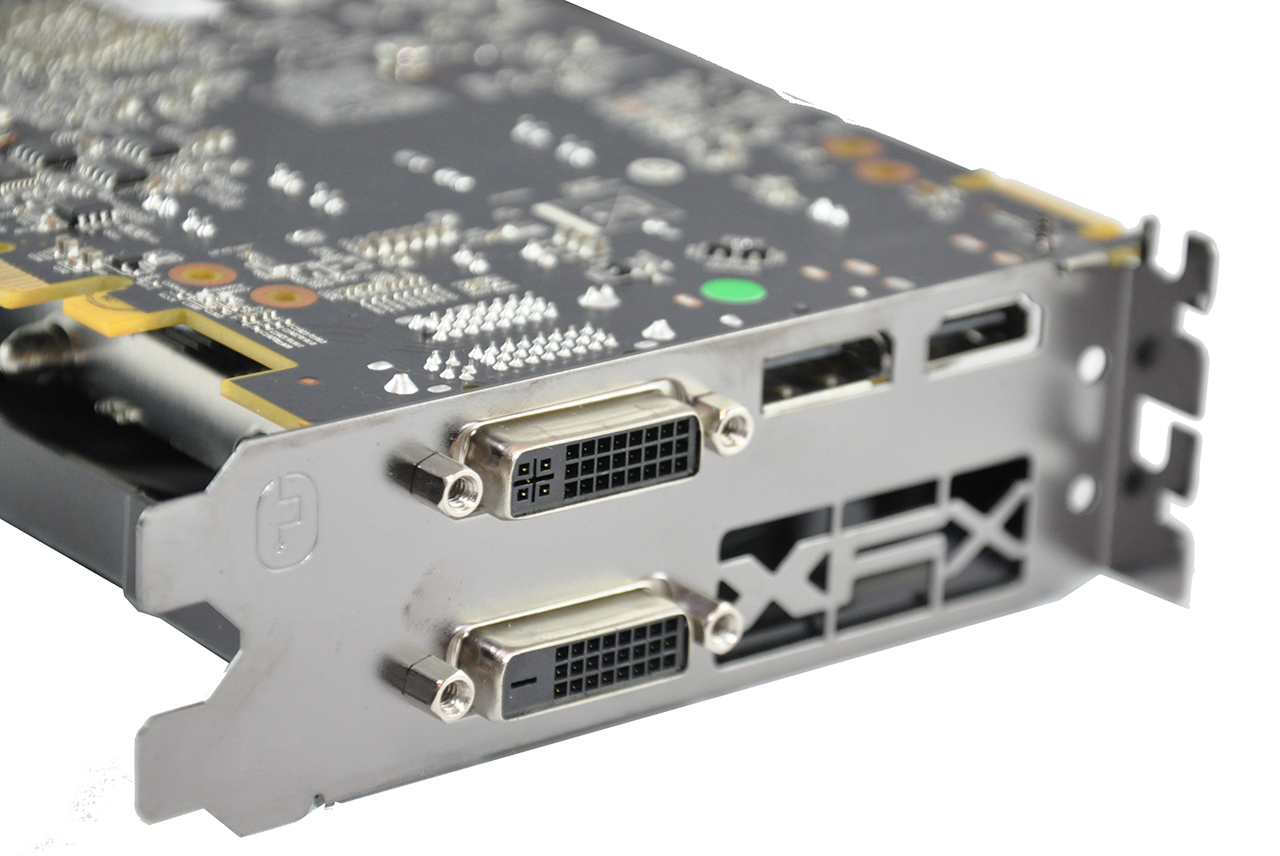
The outputs found on the back of XFX’s R7 370 Black Edition include dual-link DVI-D and dual-link DVD-I, one HDMI 1.4a port and a full-sized DisplayPort connector. With the remaining space, XFX cut out some ventilation with its logo serving as a grille.

The R7 370 Black Edition's packaging is really quite basic. The box is made of corrugated cardboard and has a slide-out section housing the board. The tray doesn’t provide any support at all. Fortunately, the hardware is tucked inside a thick bubble-wrap bag.
Along with the card, XFX includes a quick-install guide, a driver disc, an install guide and an adapter that converts two four-pin Molex connectors to one six-pin PCIe connector. The R7 370 requires a 500W power supply, so most PSUs should have the requisite cables available already.
Kevin Carbotte is a contributing writer for Tom's Hardware who primarily covers VR and AR hardware. He has been writing for us for more than four years.
-
Achoo22 It would be nice if this article had proper links for reviews of the GTX950 that was being compared. I follow Tom's pretty closely, but I don't remember seeing the review and it isn't currently listed in the best-of-the-month column. It also would've been nice, for the sake of comparison, if the article mentioned the price delta between the card in question and the board that tested highest - in this case, it would've been nice to explain that the gtx960 is about $50 more than the r7 370 instead of merely referring to it as "the pricey 960."Reply -
cinergy Tom's bashing AMD yet again. Don't worry, soon they will be out of business and you can only buy your precious nvidia.Reply -
Mac266 ReplyTurn down the fan profile and it will magically become quiet.
And hot. It's a damn thin line. -
americanbrian I suspect the aggressive fan profile is to ensure the PCB components that do not contact the heatsink receive adequate airflow. I would be willing to bet that if you relax the fan profile your memory and voltage regulators start getting a bit hot.Reply
I have to say I am distinctly unimpressed with XFX third party cooling solutions. I have had a number of DD cooled GPU's and they are really bad. For example, one revision of the 7950 has blocked vents over the VRMs so no airflow at all. I had the rear fan blow out prematurely on a 7970. And on another 7950 the card throttled stock clocks until I increased the power limit. Overall just AVOID AVOID AVOID.
I recommend Sapphire Dual-x/vapour-x, tri-x and Gigabyte windforce third party cooling. MSI-gaming style has also given me problems similar to the XFX DD (failed rear fans, better solution overall though when working). -
Cryio This review is off .... The 380 performs slower than a 960 in the majority of the tests, which is strange, since the 380 is the faster card. Then .. all AMD cards have very low and consistently low minimum framerates, which again makes no sense. The 750 Ti even is a fast or faster in some tests compared to a 370, which is insane. The 750 Ti could NEVER reach HD 7850/265 levels, yet here it reaches and outpaces the a 370, which is a 265 that has more efficient memory modules and maybe a slight overclock.Reply
Also, the fact that a 100+ MHz increase on the core and 150-200 MHz increase on the memory did nothing to performance also is very weird.
